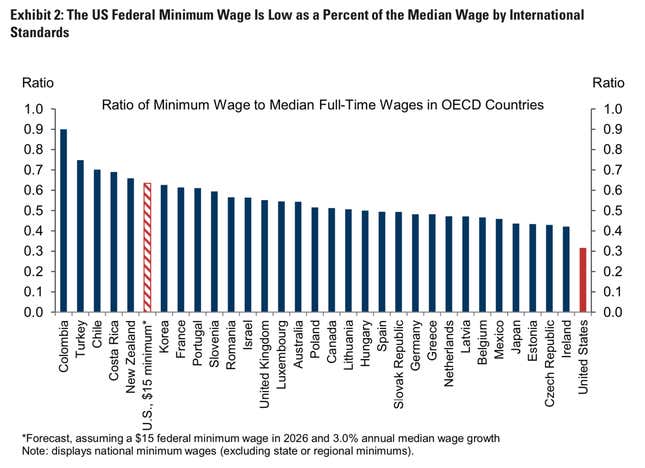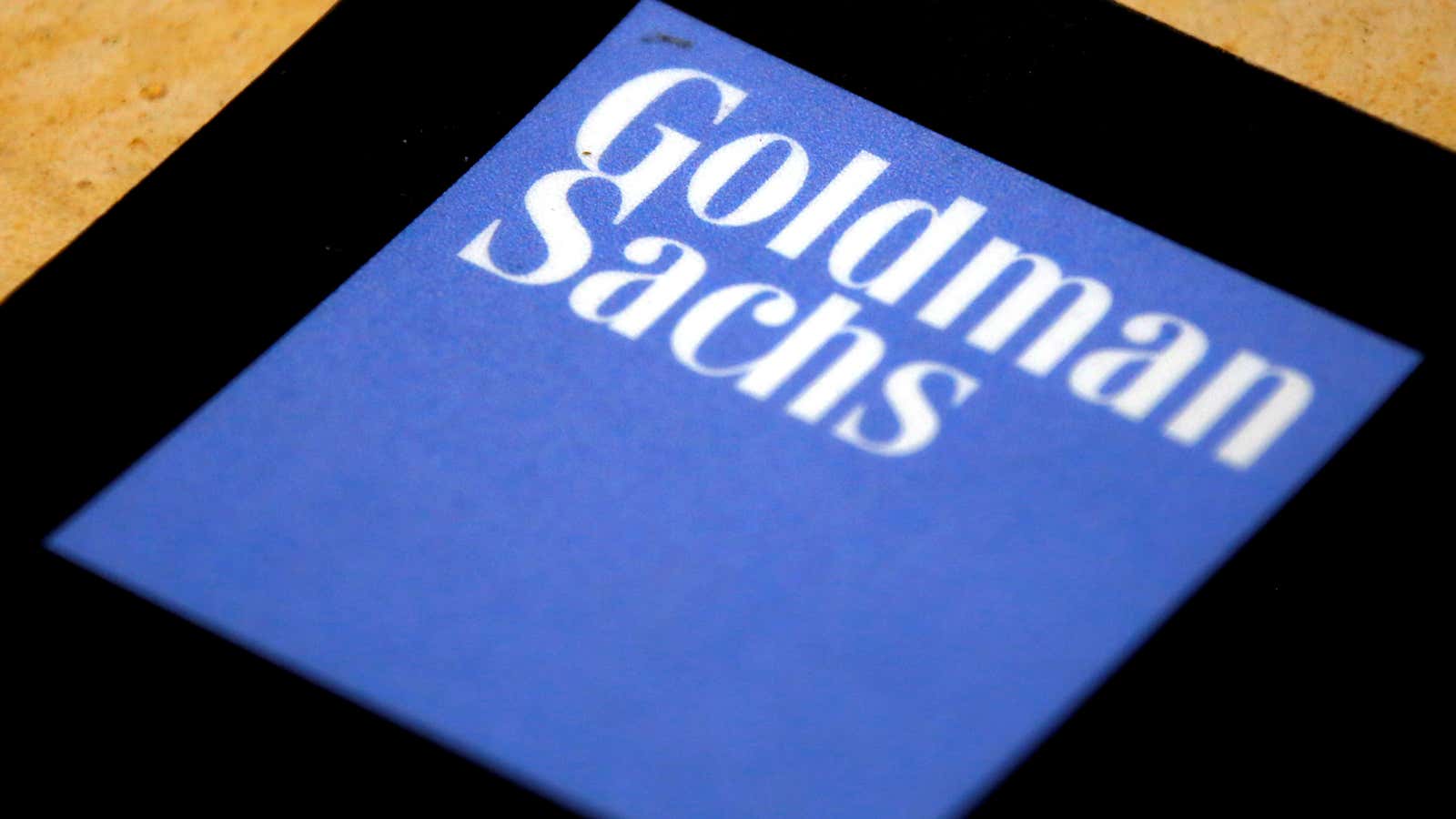With a proposed $15-an-hour federal minimum wage continuing to be a a contentious piece of US president Joe Biden’s $1.9 trillion pandemic-relief proposal, Goldman Sachs’ analysts have added their thoughts to the debate: the federal wage floor could be raised.
But the investment bank’s analysts, writing in a Feb. 8 economics research note, say that a compromise of a minimum wage of $10 to $11 an hour, phased in no faster than an additional $1 per year, is “more politically realistic.”
The analysts estimate that about 30% of US workers would benefit, in some cases sharply, from a $15 minimum—most of them adults with family incomes below $50,000. In Mississippi, which has no state minimum wage, 40% of the workforce would benefit either directly or through spillover wage effects. (To date, 29 states and Washington DC, which together are home to half the US population, have minimums that are above the federal level of $7.25 per hour.)
The analysts also address what other economists have proposed: expanding the earned income tax credit (EITC), which refunds taxes to workers with very low wages. In isolation, this would allow employers to capture some of the benefit of the policy toward the working poor. But combining minimum wage increases with the EITC would shift more of the benefits to workers, the Goldman analysts noted.
The federal minimum wage is remarkably low by international standards
Not only has the US federal wage floor remained the same since 2009—it has declined substantially in real terms over the last 50 years. The ratio of the federal minimum wage to the medium wage has fallen from one-half in 1960 to one-third in 2020. If a $15 minimum wage was implemented in 2025, Goldman analysts forecast that the minimum-to-median ratio would jump to nearly two-thirds—bringing up the US from the very bottom among OECD countries to the top end of the range, between New Zealand and Korea.

But will a higher minimum wage hurt jobs?
Few studies have looked at the effects a $15 minimum wage would have on jobs, as few hikes of this size have occurred in the US.
A frequently cited study of Seattle’s 2016 adoption of a $13 minimum wage did find evidence of employment losses. But Penn State assistant professor of public policy Hilary Wething, who was part of the team of researchers on this study, told Quartz that the incremental increases called for in the proposed national legislation that the Republican-controlled Senate refused to take up in 2019 is were much “less aggressive” than the schedule in Seattle’s policy, meaning businesses would have more time to acclimate to a federal mandate. Another study in 2019 looked at minimum wage effects in low-wage counties and did not “detect adverse effects.”
Meanwhile, just this week, a new study from the nonpartisan Congressional Budget Office found that increasing the federal minimum wage to $15 an hour by 2025 would cut employment by 1.4 million and reduce the number of American workers below the poverty line by 900,000.
The Democrats could compromise—but they didn’t have to in Florida
The Goldman analysts concluded that “the odds of an increase to $15 are low,” given the Democrats’ razor-thin margin in the Senate. They also note that previous federal minimum wage hikes happened when unemployment rates were relatively low. They point out that Democrats could try pushing the proposal through by using what’s known as the budget reconciliation process, by changing Senate rules let legislation proceed with a simple majority, or to win bipartisan support with at least 10 Republican votes. The latter might not be impossible if the Democrats are willing to compromise. A more modest wage increase phased in over several years could win over some Republican support, they note.
After all, Florida, which voted for Donald Trump in the Nov. 3 presidential election, recently became the eighth state to adopt a $15 minimum wage.
